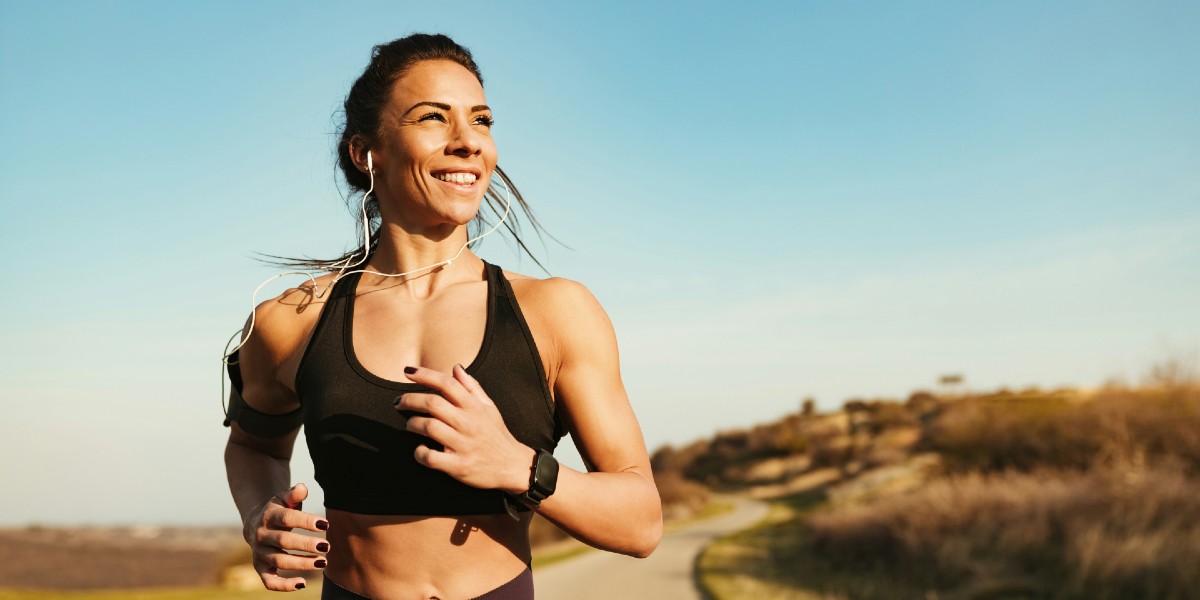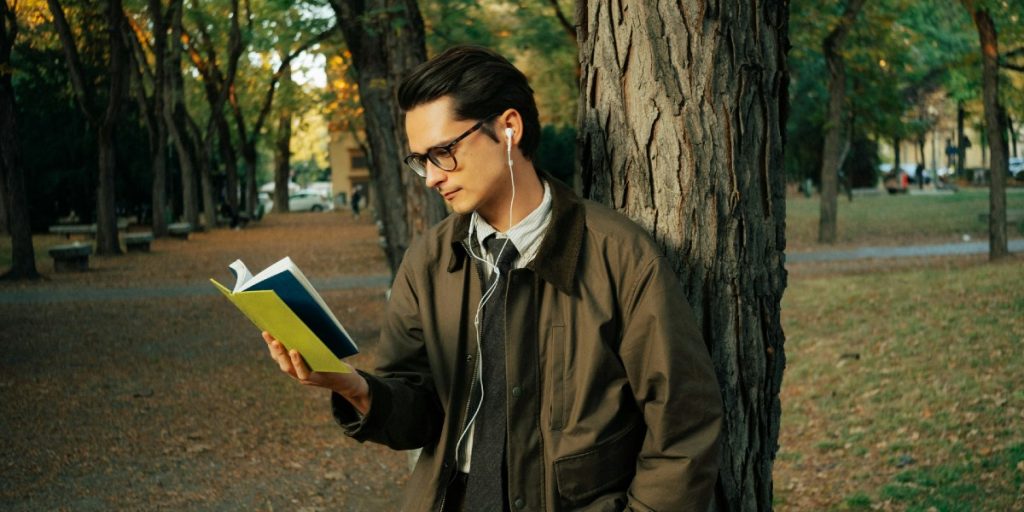Starre Vartan is a science writer who contributes regularly to Scientific American and National Geographic. She has also written for CNN, the Washington Post, Slate, and New York magazine, among other outlets.
What’s the big idea?
Women are astoundingly strong—even stronger than men, in many ways. Both sexes have their own strengths, but men’s advantages were put on a pedestal due to cultural choices, not biological superiority. Women have always been strong, but it takes redefining our societal benchmarks of strength to recognize, appreciate, and celebrate the power of female bodies.
Below, Starre shares six key insights from her new book, The Stronger Sex: What Science Tells Us about the Power of the Female Body. Listen to the audio version—read by Starre herself—below, or in the Next Big Idea App.

1. What strength means.
For as long as women have been called “the weaker sex,” strength has been defined by what men’s bodies can do best. We’ve been taught that power means lifting heavy things or sprinting short distances—abilities that came to define strength because men set the terms. But what if we flipped the lens? What if strength wasn’t measured by how much you can bench press, but by how well a body can ward off infection, by the resilience of its muscles or its flexibility, its ability to tolerate pain or to run long distances, or even to live longer?
In those areas and others, the female body is stronger than the male. That doesn’t mean men aren’t strong too; it just means that we’ve ignored a huge part of the story of human strength. I’ve lost count of how many times I’ve been told that women are delicate or fragile because of the things that make us women: too much body fat, too many hormones, too sensitive, too small, not built for the hard stuff. But science doesn’t back any of those myths.
Women’s muscles retain their strength longer as we age. Our metabolism is built for endurance. Our menstrual cycle has unique biological benefits. Our sensitivity is a source of resilience, and the very design of the female nervous system gives women a remarkable edge when it comes to pacing, enduring discomfort, and rising to a challenge. It’s time to redefine strength and recognize that women have always been strong, just in ways that weren’t celebrated, recognized, or appreciated.
2. The culture that shapes strength.
From the very start, girls and boys are taught to move differently, and it has a huge impact on how we build strength. According to sports science, the ages of about two to eight are the most critical for learning fundamental motor skills. But while boys are encouraged to run, throw, and roughhouse, girls are often steered toward activities that emphasize grace and precision—skipping, jumping, and fine motor control.
This doesn’t happen by accident. As biological anthropologist Kate Clancy told me, it’s mostly culture that causes gendered differences in physical strength. Boys are encouraged to build muscles from the very start, while girls are pushed toward movement that doesn’t produce muscles. Those early lessons stick. They shape our perception of strength and influence how our muscles develop later in life. This disparity even shows up at the elite level.
“Boys are encouraged to build muscles from the very start, while girls are pushed toward movement that doesn’t produce muscles.”
Strength and conditioning coach Joanna Parsonage remembers working with a National Women’s Rugby League team where some athletes had never lifted weights before. This was seven to eight years ago, but this kind of disparity still affects players today. In 2021, a viral video exposed the shocking gap between the men’s and women’s weight rooms at the NCAA basketball championships. The men had a huge room full of equipment, while the women were left with a single bench and a set of tiny dumbbells. As player Sedona Prince put it, “If you’re not upset about this problem, then you’re a part of it.”
These early and ongoing messages teach girls and women to doubt their strengths and to accept a sports culture that gives them less support, lower pay, and fewer opportunities. The U.S. Women’s Olympic soccer team was long paid far less than the men, despite winning more games and generating as much revenue—a disparity only corrected in 2022. This is how culture shapes our strength and the way we value ourselves as athletes and as women—and how others value us.
3. The female immunity advantage.
There’s a superpower in the female body that doesn’t get nearly enough attention: immunity. It’s one of the primary reasons women tend to live longer than men, even during challenging times. A landmark paper from 2018 put it simply, “Women live longer than men even during severe famines and epidemics.” That was the title of the paper. This holds true across the world, regardless of social or behavioral conditions that favor males.
Why? Part of the answer lies deep within female biology. Both estrogen and the XX chromosome give women an edge when it comes to fighting disease. Neutrophils, B cells, and memory cells (all the core defenders of the immune system) aren’t only more numerous in women, but they are also stronger, smarter, and better at adapting.
A 2020 National Institutes of Health study found that neutrophils in female bodies are more mature and active than in males, especially in the 20 to 30-year-old age range. Meanwhile, women’s B cells produce more antibodies and refine them more effectively. The female body continually reshapes and mutates its antibodies through successive cycles, creating more effective virus-fighting weapons and storing those patterns for longer. As neurogeneticist Sharon Moalem puts it, “Women have immunologically evolved to out-mutate men.” Female biology has been shaped by evolution to adapt, adjust, and protect itself in ways that often outpace male biology. It’s a quiet but profound reminder that strength doesn’t just come from muscle and bone. Sometimes it’s written deep within our DNA.
4. The egg makes the decisions.
For a long time, biology textbooks told the same story: Sperm were the active heroes of fertilization, racing toward a passive egg, determined to break in and claim victory. But that story is wrong. As early as the 1980s, researchers discovered that the egg is far from passive when it comes to the fertilization process. In fact, it’s making the decisions.
“The egg chooses when and if the wriggling sperm can break in.”
The egg uses its zona pellucida, a thick protective protein coat, to chemically grab sperm, test them, and either reject or accept their DNA. The egg chooses when and if the wriggling sperm can break in. Research throughout the 1990s and beyond has only strengthened this view. Yet, every few years, it’s announced as if it were some brand-new revelation. In 2017, Quanta Magazine referred to it as “challenging dogma” that the egg might be an active player. In 2019, the University of Virginia announced that the egg is “not passive after all.” But this is old knowledge buried under gendered ideas about biology.
As feminist professor of science, Evelyn Fox Keller pointed out, “Assumptions about gender have shaped how we tell scientific stories for decades. What we call ‘discovery’ is often just rediscovery.” Today, we even understand that the egg may send out chemical signals before sperm arrives. In a 2020 study, researchers found that an egg can attract certain sperm over others. The egg can literally pick and choose which sperm it will draw closer and which it will reject. The egg doesn’t just sit there waiting for its hero to arrive. It chooses its match, guides the process, and shapes the very start of life itself.
5. The evolution of pain.
Women experience more pain across more areas of their bodies and for longer periods than men do. This is well-established and known among those who research and treat pain, and most of us, regular people, know it too.
There are a few reasons for this. Female bodies have more organs than male bodies. We experience menstruation over a large part of life, the tolls of reproduction, postpartum effects of pregnancy and childbirth, breastfeeding, and menopause. All these things can cause pain conditions. Women also often survive illnesses and injuries that kill men; that survival can lead to a longer life, but also chronic pain.
There’s another aspect to female pain that is a little more interesting than those basics. What if pain isn’t just a burden? What if pain evolved as an advantage? Greater sensitivity to pain could be a signal to slow down, rest, and heal, making it a built-in alarm system in the harsh world of early human life. This alarm might have saved countless lives, making sure the wounded didn’t push too hard or too soon. Responding to pain shaped survival.
“What if pain evolved as an advantage?”
Throughout history, responding to pain has also shaped society itself. Feeling pain, understanding it, and learning how to treat it laid the foundation for early medicine. From pain emerged the healers: those who knew which plant to use as a compress, when to rest a swollen ankle, or how to soothe a sick child. Those individuals became valued and respected, and by passing down their knowledge, not only did they save lives but also build trust and strengthen communities.
Pain has always been a way for humans to connect. Pain and how we express it may be one of the earliest ways we communicated. It’s a way to ask for help, give help, and deepen bonds. What some people have called a weakness might be one of the oldest and most profound strengths we have.
6. Surfing and strength.
For the past 50 years, surfing has been considered a guys’ sport, and women were often literally pushed off the waves and told to go home. That often happened to Mindy Pennybacker when she was younger. She’s the long-time surf columnist for The Honolulu Star-Advertiser and lifelong surfer herself. Thankfully, surf culture is changing.
In the last decade, surfing has taken off among women. “Pre-colonization, Polynesian women were regular surfers throughout the Pacific,” as Pennybacker recounts in her book Surfing Sisterhood Hawai’i. At a Kamehameha Day surfing contest in 1887, Poepoe, a favorite to win, competed against his wife, Nakookoo. She shot like a flying fish through the wave, jostled the champion, and came in first place. The crowd went wild. This is likely the first description of a surfing contest in the English language, and a reminder that women have been on the waves for a very long time.
Over the last few decades, people have argued that men are better at surfing because they have bigger upper-body muscles. More bulk meant more speed paddling into a wave and popping up quickly. But the truth is that every surfer must work with their own body weight. Bigger muscles might look impressive, but they also add weight. Sports scientist Joanna Parsonage found that an athlete’s strength relative to their own body weight is what really matters, and that strength training for female surfers helps close the performance gap between the sexes. Parsonage took her research to the athletes training for the 2024 Olympics.
“Women surfers are stronger, faster, and more competitive than ever.”
A decade ago, strength training was rare for women surfers. Now it’s the norm, and the results speak for themselves. Women surfers are stronger, faster, and more competitive than ever. This comes at the same time that organizations have become serious about gender equality and inclusion in surfing, creating more opportunities.
In the past, female surfers had been literally shut out of competitions and were not allowed to enter. In 2017, the World Surf League held its first women’s big wave contest at Jaws on Maui. In 2019, it awarded equal prize money to male and female surfers. When surfing debuted as an Olympic sport in 2021, it featured an equal number of male and female competitors. By 2022, it established equal venues for both sexes. In 2023, for the first time, both women and men competed in the Super Bowl of surfing, the Eddie Aikau Big Wave Invitational at Waimea Bay. Most of this has happened just in the last five years, so it’s really exciting to think about where young women surfers growing up now will be in another decade.
Enjoy our full library of Book Bites—read by the authors!—in the Next Big Idea App:





























